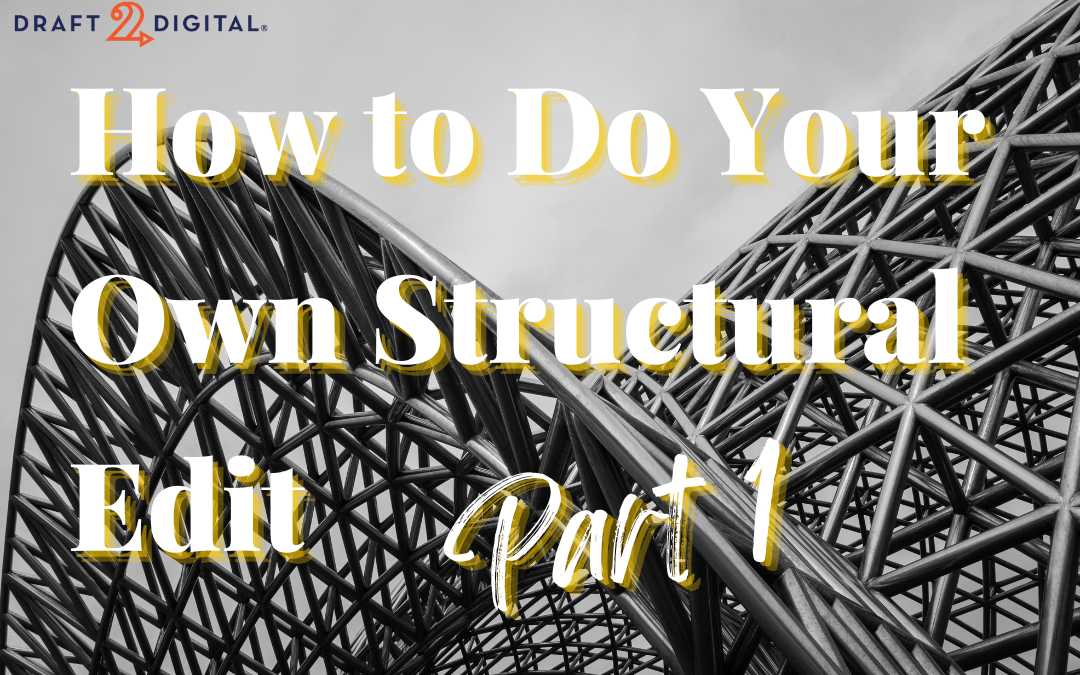Editing is a famously daunting task for many writers, but it doesn’t have to be. At the end of the day, you want to put a compelling, gripping story out into the world—and as a storyteller, who better to take at least an initial look over your manuscript than you?
Investing in a good editor is a great thing for those who have the resources. But bootstrapped indie authors—or those who just want help with proofreading and line edits—will want to do the structural editing themselves. As it turns out, there’s even an app for that.
If technology isn’t your thing, that’s okay. Any writer can leverage basic storytelling principles to give their completed manuscript a solid structural or developmental edit before sending it along to proofreaders, line editors, ARC readers, and anyone else who gets the privilege of putting their eyes on your words before the general public.
What is structural editing?
Let’s start at the beginning, shall we? Structural editing—also called developmental editing—is essentially a revision of your manuscript that examines your the plot, character, setting, and overall narrative arc. It’s the process of making sure the beats of your story flow nicely, make logical sense, and read well once they’re all fitted together in your manuscript.
(By the way, this process applies to both fiction and nonfiction. Some of the details will differ for nonfiction authors, but the principles remain the same.)
The object of a structural edit is to answer three core questions:
- Do you have a complete story with a fully-formed narrative arc?
- What should you change in your story to make it better?
- Is the book finished?
Step 1: Write a skeleton blurb
Before the structural editing process begins in earnest, you’ll need to write just one more thing: a skeleton blurb. Even though you may not be ready to start marketing your book yet, the skeleton blurb will help keep you focused on the core elements of your story (or your message, for nonfiction authors) during the editing process. And yes, when you eventually bring your book to market, you’ll polish up this skeleton to become a living, breathing book description (or blurb).
The first step when writing the skeleton blurb is deceptively simple: identify the protagonist. It’s more common than you might think for authors to start writing with one protagonist in mind and shift gears as they work through the story. A story can have multiple protagonists (think Thelma and Louise), but it’s important for you as the author to know the difference between lead characters and supporting actors. A good way to tell is to look for the character(s) with the most to win or lose. That’s your protagonist.
Next, identify the story goal. What is the main character (or group of characters) trying to accomplish in the story? What is at stake if they don’t reach their goal? This last question is key; readers will only get hooked on a story with something at stake. They need to relate in some way to the challenge at hand to worry about how the story will end, which keeps them reading.
The format of a skeleton blurb looks something like this:
[description of main character and their challenges] + [inciting incident] + [challenge to be overcome] + [what’s at stake]
The blurb for Lee Child’s Killing Floor is a great example: “Ex-military policeman Jack Reacher is a drifter. He’s just passing through Margrave, Georgia, and in less than an hour, he’s arrested for murder. Not much of a welcome. All Reacher knows is that he didn’t kill anybody. At least not here. Not lately. But he doesn’t stand a chance of convincing anyone. Not in Margrave, Georgia. Not a chance in hell.”
The writing is more creative and polished than necessary for a skeleton blurb, but all the ingredients are there.
Main character: Jack Reacher, a drifter
Inciting incident: Arrested for a murder he didn’t commit
Challenge: Proving his innocence
Stakes: Jail time—if he’s lucky
As you’re editing, use the skeleton blurb as a sort of litmus test for your scenes. Does each scene relate back to the core story in your blurb? Do your story arc scenes hit the right points?
(More on scene analysis and story arc scenes in Part 2.)
Step 2: Decide whether you have a complete narrative arc
To determine whether you have a complete narrative on your hands, you’ll need to examine the story arc. There are many story structures out in the world, but the simplest one is known as Freytag’s pyramid. Rising action leads to an inciting incident, followed by plot point one and plot point two (twists and turns), which lead to a climax. But the story doesn’t end there; our protagonist still has a few loose ends to tie off before the story comes to a final close. In general, if all the beats are there, you have a story. Congratulations! Now the editing work begins.
The heart of a good structural edit is analyzing your scenes to make sure you hit the five key plot points of a story arc, in order, at approximately the right times. (The “five” part isn’t really important, but having a complete narrative arc and pacing that fits your story is.)
If you’re looking for a wealth of examples, check out K.M. Weiland’s Story Structure Database, an archive of famous books and movies that breaks down each major plot point and relates them back to elements of story structure.
Psst: there’s more to the structural editing process than we had time to cover in this post. We’ll go into more detail in Part 2, when we’ll take a deep dive into Plot, Character, POV, and Setting.
